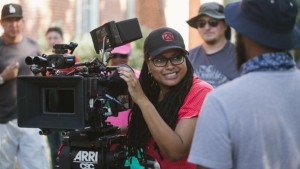Hollywood failing on diversity
Films and TV shows produced by major media companies in the US are ‘whitewashed’ and there is an ‘epidemic of invisibility’ when it comes to women, ethnic minorities and LGBTI people, a new study has found.
One of the most exhaustive surveys ever of diversity in Hollywood produced an ‘inclusivity index’ of ten major media companies ranging from Disney to Netflix.

New study confirms that Hollywood is failing on diversity when it comes to women, ethnic minorities, and LGBTI people
The survey examined 109 films released by major studios in 2014 and 305 scripted, first-run TV and digital series across 31 networks and streaming services that aired from September 2014 to August 2015.
More than 11,000 speaking characters were analysed for gender, racial and ethnic representation and LGBT status. Some 10,000 directors, writers and show creators were examined, as was the gender of more than 1,500 executives.
The result was an epic fail in terms of diversity and inclusiveness for all of the media companies.
In the 414 studied films and series, only a third of speaking characters were female, and only 28.3 percent were from minority groups – about 10 percent less than the makeup of the US population.
Characters 40-years or older were dominated by males across film and TV – 74.3 percent male to 25.7 percent female.
Just two percent of speaking characters were LGBT-identified. Among the 11,306 speaking characters studied, only seven were transgendered – four of them from the same series.
Just 15.2 percent of directors, 28.9 percent of writers and 22.6 percent of series creators were female.
In film, the gender gap is greatest with just 3.4 percent of the films studied were directed by women, and only two directors out of the 109 were black women – Ava DuVernay, who directed ‘Selma’ and Amma Asante director of ‘Belle’.
The study came in the wake of the 2016 Oscars ceremony – the second straight year of all-white acting nominees – which has enflamed criticism of the Academy of Motion Picture Arts and Sciences.
The survey was produced by the Media, Diversity and Social Change Initiative at the University of Southern California’s (USC) Annenberg School for Communication and Journalism.
USC professor Stacy Smith said the survey painted a picture of exclusion.
“When we start to step back to see this larger ecology, I think we see a picture of exclusion. And it doesn’t match the norms of the population of the United States,” Prof Smith said.
“When we turn to see where the problem is better or worse, the apex to this whole endeavor is: Everyone in film is failing, all of the companies investigated. They’re impervious to change,” he said.
But he said there were pockets of promise in television.
“There is a focus that change is possible. The very companies that are inclusive – Disney, CW, Hulu, Amazon to some degree – those companies, if they’re producing and distributing motion pictures, can do this. We now have evidence that they can, and they can thrive,” Prof Smith said.
Ruby Brown
AMES Australia Staff Writer












